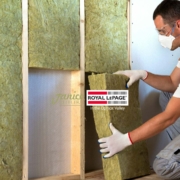Preparing for Your First Winter After Buying Houses for Sale Comox Valley
Buying one of the houses for sale Comox Valley means you’re about to experience your first Island winter. For many new residents, the change of season calls for some adjustments. The Comox Valley’s winters are mild compared to most parts of Canada, but the combination of rain, wind, and cool temperatures can still take some getting used to. If you’re about to spend your first winter on the Island, this post is for you!
What to Expect in a Comox Valley Winter
While snow is rare at lower elevations, rain is common from November through February. That steady drizzle is part of what keeps the Valley green and lush year-round. Make sure your new home is ready for all of the precipitation to come by checking seals around doors and windows. A few improvements can make a big difference in your comfort over the winter. Many locals also invest in good-quality rain gear and footwear for daily errands or outdoor adventures.
Heating costs can vary depending on your home’s setup. Electric baseboards, heat pumps, or gas fireplaces all have different operating costs. If your home has an older system, consider a maintenance check before the colder months arrive.
It’s also wise to prepare for occasional power outages. Storms sometimes cause short disruptions, especially in rural areas. You’ll thank yourself for having a few candles, flashlights, and a backup plan in place.
Being prepared is important, but it’s also worth knowing that Winter in the Comox Valley isn’t just about staying indoors. Locals often visit Mount Washington for skiing and snowshoeing or enjoy walks at Goose Spit during calm winter days. Cafés in Comox and Courtenay offer warm spots to relax and meet new people. The slower pace of winter gives residents time to appreciate the small-town charm that makes this area special!
Contact Me Today About Houses for Sale Comox Valley
Settling into one of the houses for sale Comox Valley means embracing a new way of life that follows the climate of the seasons. With a bit of planning, your first winter here can be one to remember. Contact me today for advice on homes that fit your lifestyle and to learn more about living in this beautiful part of Vancouver Island!
FAQ
How cold does it get in the Comox Valley?
Temperatures are mild compared to most parts of Canada, often ranging between 1°C and 8°C in winter.
Are utilities more expensive in the winter?
Heating and electricity costs may rise slightly, depending on your home’s size and energy source. Regular maintenance can help keep bills manageable.
Do residents still get out and enjoy outdoor activities?
Absolutely. Locals embrace winter with hikes, skiing, and cozy community gatherings. There’s always something to do, even when the rain falls.



